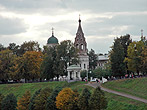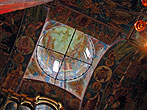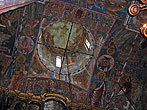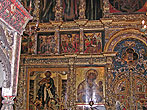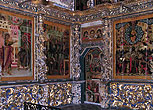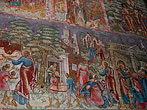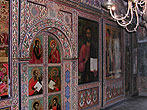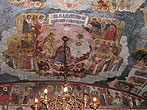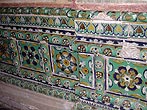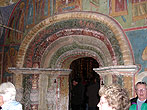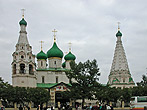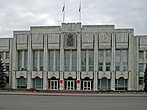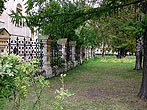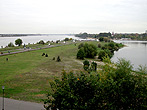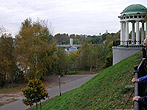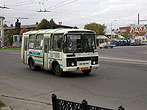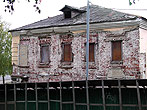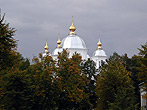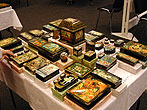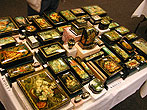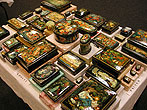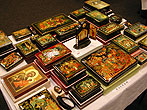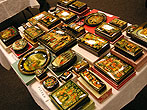Yaroslavl
September 24, 2005
Arrival at Yaroslavl put us back on schedule. It is a city of approximate 700,000 — the largest city that we visited between Saint Petersburg and Moscow. It is located on the Volga River which we entered when we left the Rybinsk Reservoir. Upon departure from the reservoir, we entered another lock and this time dropped about 46 feet. From the lock it was about 6 hours down river to Yaroslavl. Dating back to the Eleventh Century, it founder was Kiev Prince, “Yaroslavl the Wise”.
There wasn't much opportunity for photographs on arrival and at the start of our venture into town. Therefore, we start with some photos that were taken inside the Church of the Prophet Elijah. This church, dating back to 1650, has a wealth of fresco art.
Across from the square from this church was a government building with stonework detailing the Soviet sickle and hammer. In addition, there is a relief of “Yaroslavl the Wise” that legend is he killed a bear just in the place where the present day Yaroslavl is situated and ordered to found a fortress here.
Traveling around the city, we arrived at a nice park. We saw wedding parties and our guide quickly taught us how to wish them a long life together.
It seemed that we were near the center of downtown when we stopped to visit this church, “Church of St. John the Baptist”. Photographs of the interior were not allowed. There were many people in this small church circling to each of the prayer stations and stopping for a short prayer.
Near this church is a large circle as a number of streets intersect. Center in the circle is a statue of “Yaroslavl the Wise”. Traffic was as one would expect in a city and there were several of these busses passing. The thing that caught our eyes is that were were very short, having only a few seats. Also catching my photographic eye was this building that was in dire need of repair or removal.
Yaroslavl is noted for its lacquer ware. We were taken to a very extensive display of some very beautiful lacquer work. In passing — it is not inexpensive!
Leaving Yaroslavl, we retraced our path back to the Rybinsk Reservoir. The Volga winds its way from its remote source in the Valday hills up to the Rybinsk Reservoir, changes its direction there and finally flows into the Caspian Sea. The Volga is Russia's largest waterway and is connected to the country's five seas by a network of canals. Half of all of Russia's river cargo is transported on it and its water is used to irrigate the great plain regions of the south. In general the river is navigable from March until the middle of December. During the early summer months there are many floods whereas in late summer the low level of water reveals shallow spots and sand banks. Many hydroelectric power stations were built during the 20th century to improve the country's supply of electricity. Thus the river has been divided up into a series of huge reservoirs. Today it is regarded as a big mistake, both ecologically and economically speaking, to have dammed up the river completely. Not alone were huge areas of forest flooded destroying the ecosystem, but the minute amount of electricity gained during the process by no means justified the damage done. Of all the large reservoirs along the Volga, the Rybinsk Reservoir is the only one we sail through on our way from Moscow to St. Petersburg.
